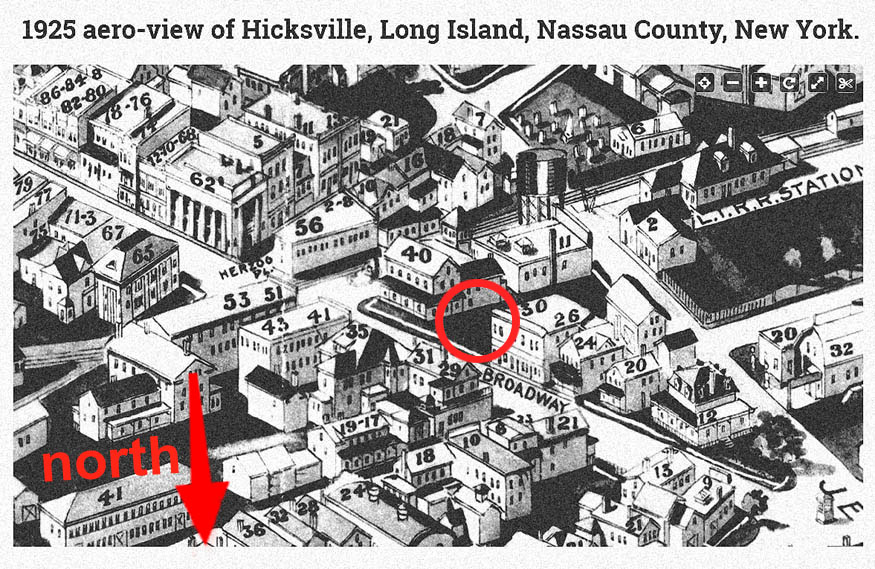The Thirties and Forties
Because of the Great Depression, the 1930s were difficult for restaurants everywhere. Some elegant high-end spots survived – like the poor, the ultra-wealthy we will always have with us – but when the stock markets crashed, many lower and middle class families, and also many nouveau riche, instantly lost whatever wealth they thought they had. Compared to upscale restaurants, diners had a better chance of survival, as long as local manufacturing did not shut down – but not every diner, or every diner owner, would be able to stay in business.
In Hicksville, the Hub Diner kept going. After leaving his native Lesbos, future owner Harry Dounelis had first settled in Brookline, Mass. In the Greek immigrant community there, he learned all he could about running an American diner. Saving his earnings, and networking with other Greeks in the Northeast, he eventually found his opportunity in Hicksville. The location chosen for the Hub guaranteed a flow of movie patrons and firemen, two groups whose patronage would continue, albeit sometimes at reduced levels, even during the worst depths of the Depression.
In contrast, let’s consider the Hicksville Grill, at 32 Broadway. Never heard of it? Well, look at the red circle in this illustration, which shows the west side of Broadway, including the Triangle:

| Listing for 32 Broadway by Year(s) | |
| Hicksville Grill | 1929 - 1932 |
| John Diner | 1934 |
| Village Diner | 1935 - 1936 |
| Hicksville Diner | 1941 - 1944 |
| Empire Diner | 1948 - 1951 |
The circled empty space is where there soon would be a 32 Broadway. I do not know with certainty if a building was constructed on the lot, or if someone just “planted” a dining car there. I suspect that there was a building, one that blended in with the neighborhood, for had it been a dining car, I would remember seeing it when I lived in Hicksville. Incidentally, I know about the existence of 32 Broadway only from entries in old annual telephone books, as shown in the table here.
It appears that, from the Great Depression through the Korean conflict, many people went to 32 Broadway to eat. The frequent changes in business names, however, suggest that the owners of these eateries did not want to remain in business at that location.
In contrast, a prosperous wartime industry meant thousands of new employees who had to eat; new diners sprouted around the edges of industrial complexes. For example, the Halfway and Rainbow diners respectively served employees who used different gates on the vast Grumman property. Post-war, the local population was ballooning; the future of Hicksville’s diners looked good indeed.

